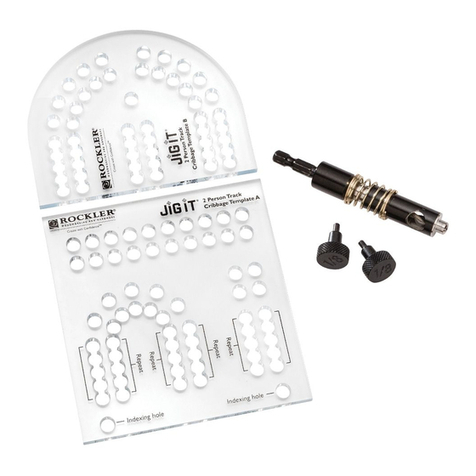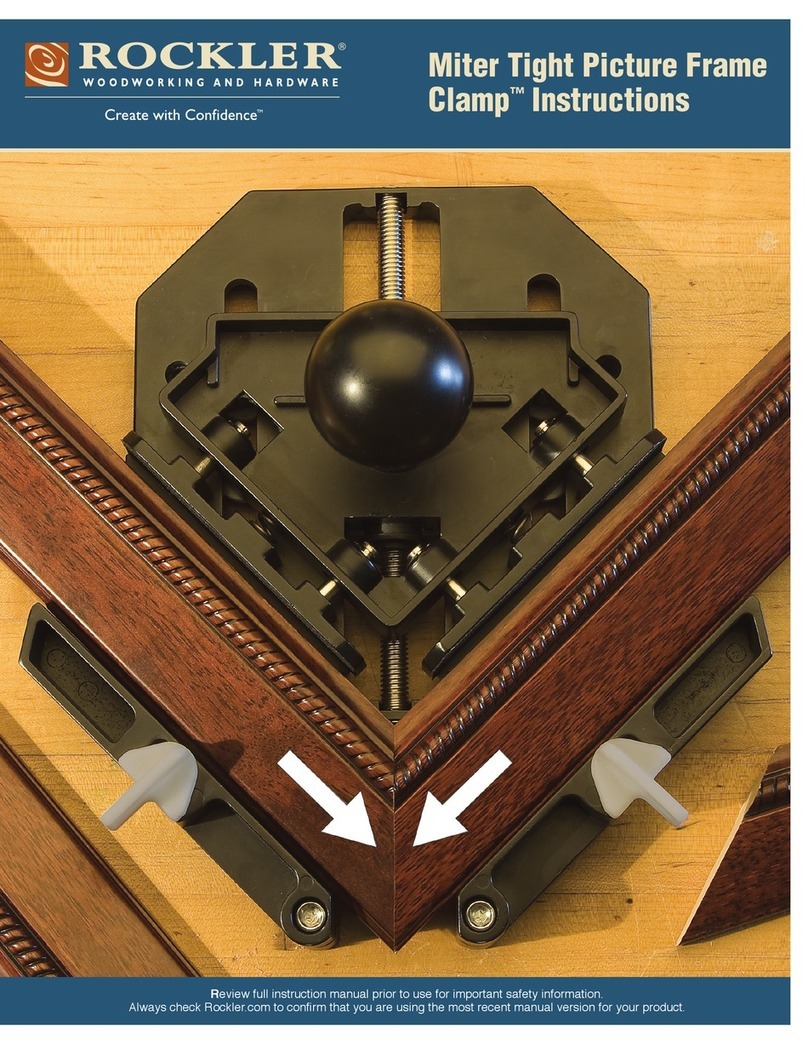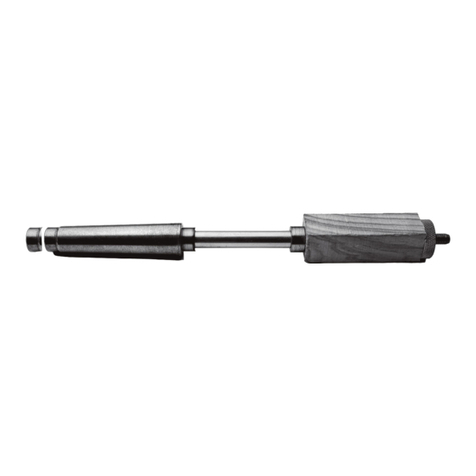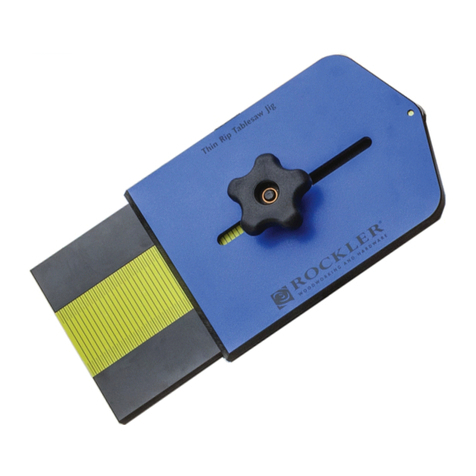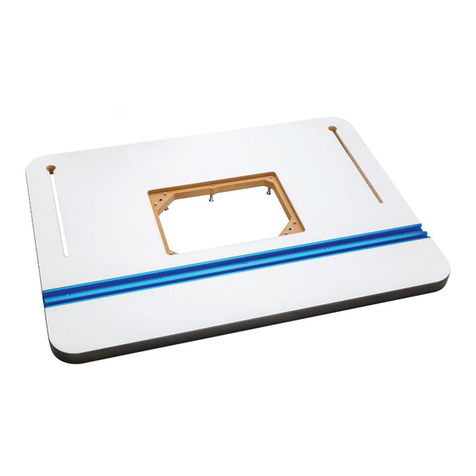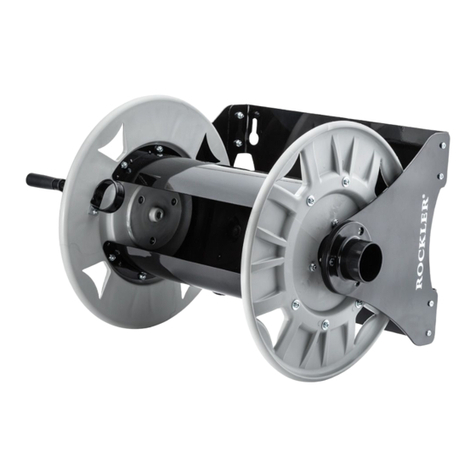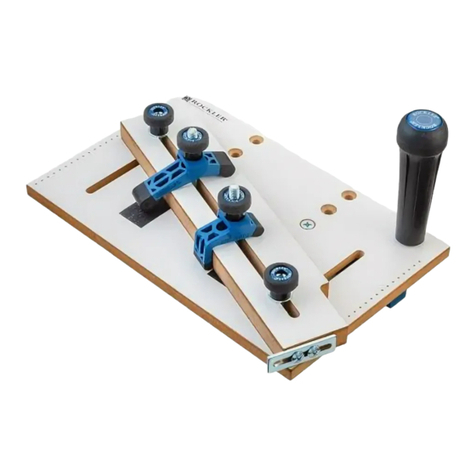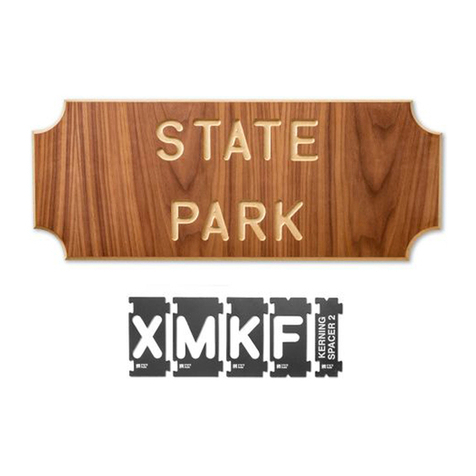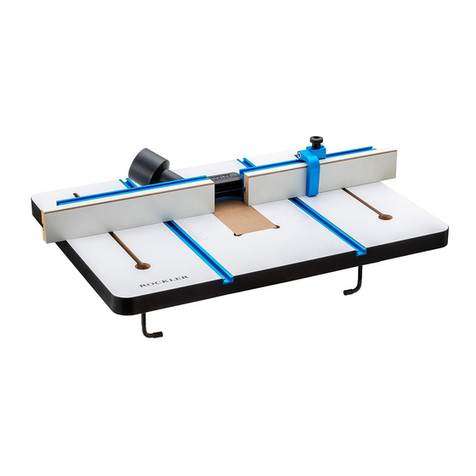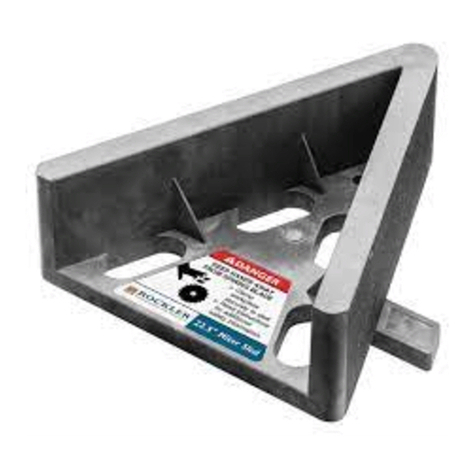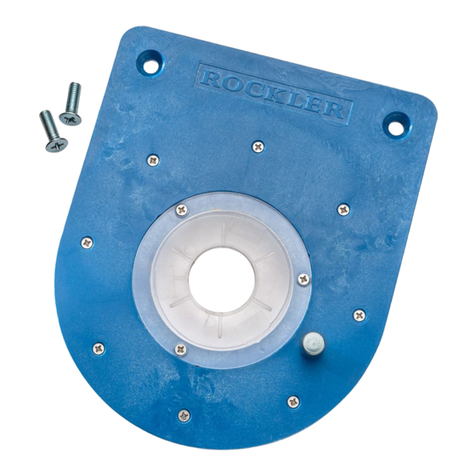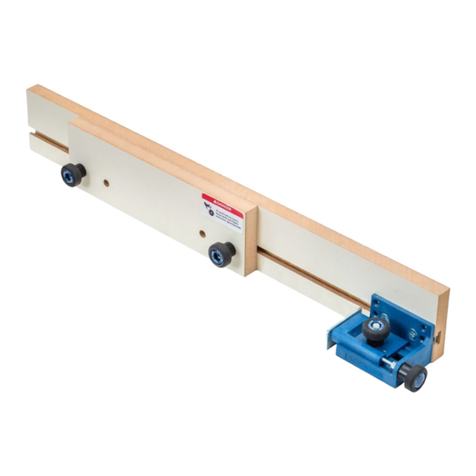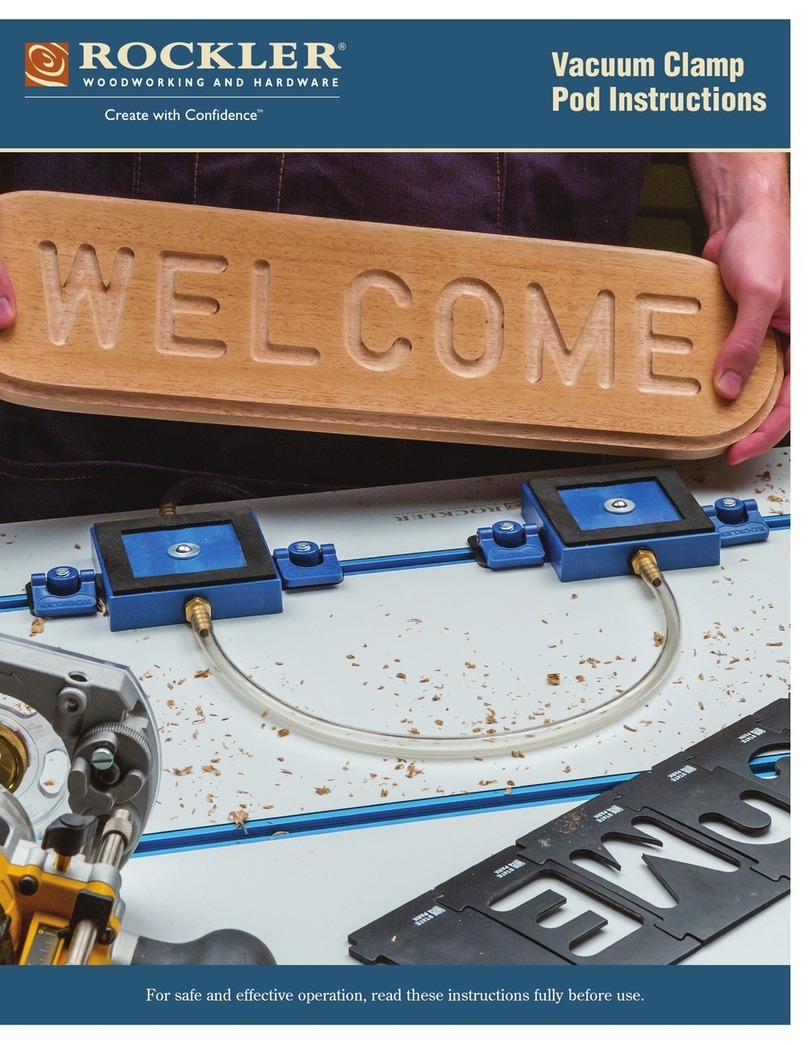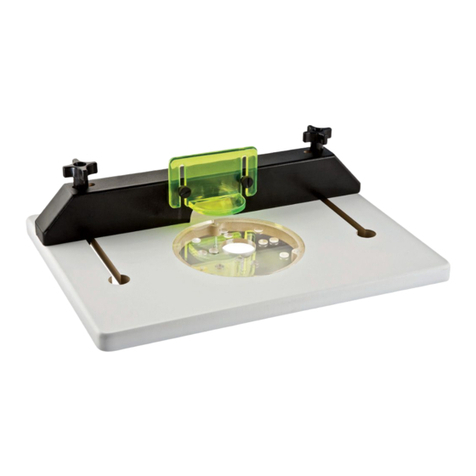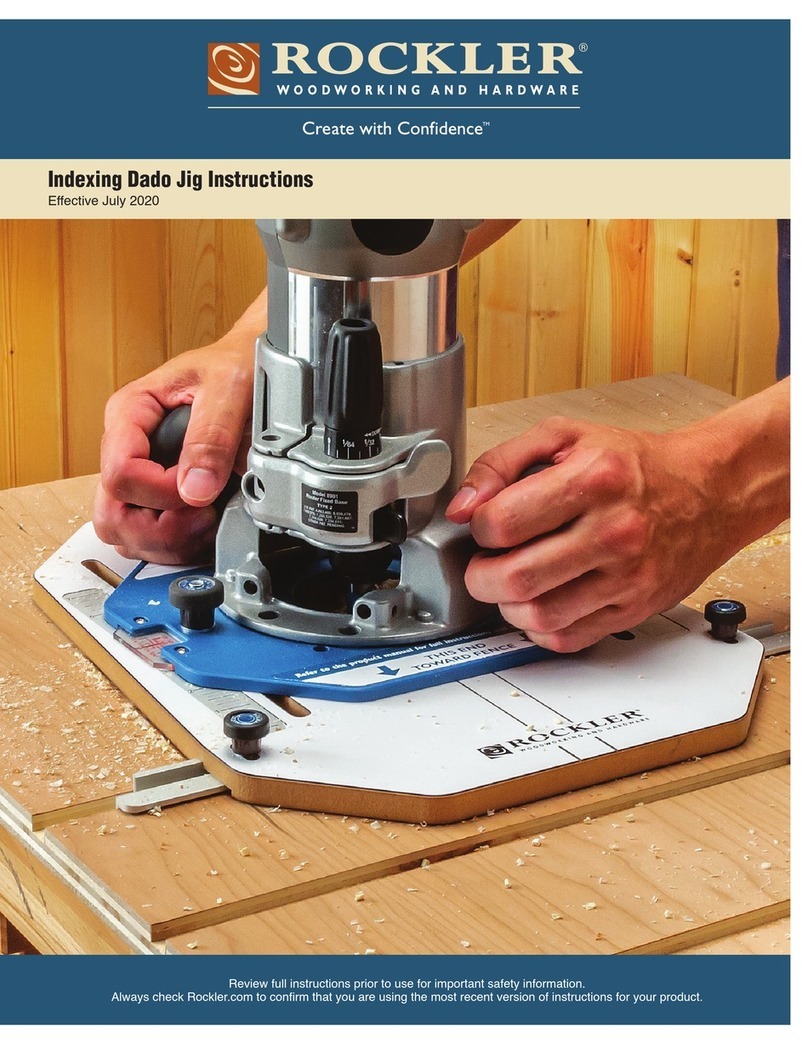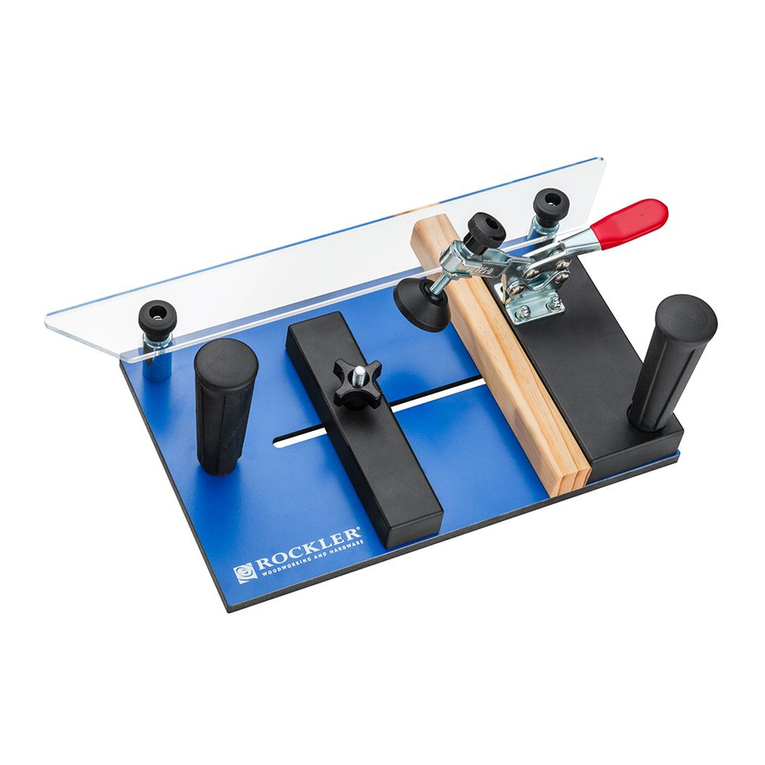
3
involved in installing the two
boards for each joint. Note that the
two left-hand joints (that is, the
joints that attach the left drawer
side to the drawer front and back)
are cut at the left side of the jig.
Subsequently, the two right-hand
joints will be milled at the right-
hand side of the jig.
Shop Tip: Always position drawer
parts so inside is facing out.
Begin by installing the drawer’s
left side in the front of the jig
(vertically), and securing it with
the cam lock. You may have to
adjust the cam lock for a good fit:
don’t over-tighten it. The top edge
of the workpiece should protrude
above the jig body (see figure 5),
but perfect alignment isn’t
necessary at this time.
Shop Tip: For even clamping, use
scrap wood as support on the
opposite end of the jig.
Slide the drawer front into the
top of the jig (horizontally). The
inside face of this part should be
facing up. (See page 4 for more on
orienting the parts correctly.)
Butt the drawer front tightly
against the drawer side (figure 6),
check that it is tight against the
stop (Part 11), and secure it in
place with the cam lock.
Now you can slide the drawer
side up so that its top edge is flush
with the top face of the drawer
front, as shown in the third photo.
Secure the drawer side in place,
tight against the stop (Part 11), by
engaging the front cam lock.
Set the Template
The template has no side-to-side
movement: the only adjustment
required is to position the template
back from the edge of the board
exactly the same distance as the
wall thickness of the guide
bushing. If you are using the guide
bushing provided with the jig, set
the template 1/16" back from the
edge of the board. The template
can be adjusted by means of two
knobs (Parts 6) located at the back
of the jig. These secure the
template to the top cam
mechanism. Be aware that, as you
lock down the top cam, the
template may move a little and may
no longer be aligned perfectly.
Set the Fence
The last adjustment to make before
milling begins is to set the fence
(Part 4). Two knobs (Parts 8) lock
the fence in place.
The reason you set the fence is
that the router base butts up
against it at the end of every cut.
This limits the length of the
grooves between the pins, into
which the tails fit. Figure 8 shows
the fence setting for 3/4" stock,
figure 9 shows 1/2" stock. Note the
different lengths of the grooves.
Setting the fence location sounds
complicated, but it’s really quite
simple. You’ll need a piece of paper
and a pencil to work out the
location, since you’ll need to add a
couple of numbers together.
Start by writing down a
measurement that is twice the
thickness of the drawer side stock
(for example, with 3/4" thick
sides, this would be 1-1/2"). Now
find the radius of your router base:
that is, the distance from the center
of the bit to the edge of the base.
Add this to the first number. For
example, if your router has a 6"
base, you would now have 3" plus
1-1/2" for a total of 4-1/2". The last
calculation is to deduct half the
thickness of the bit. The supplied
bit is 1/2", so just subtract 1/4".
Locate the fence this distance from
the front of the template. In our
example, the fence would be 4-1/4"
back from the front edge of the
template. Be sure that the fence is
set parallel to the front of the
template. Secure the fence by
locking down the two knobs, and
you’re ready to mill the test boards.
Making Minor Adjustments
Install your test boards in the jig,
set the fence and template to their
correct locations, and then lock the
boards in place with the two cam
locks. With the router bit set at the
© 2002 Copyright Rockler Woodworking and Hardware
Figure 5 Figure 6
Figure 8
Figure 9
Figure 7
Support
scrap
